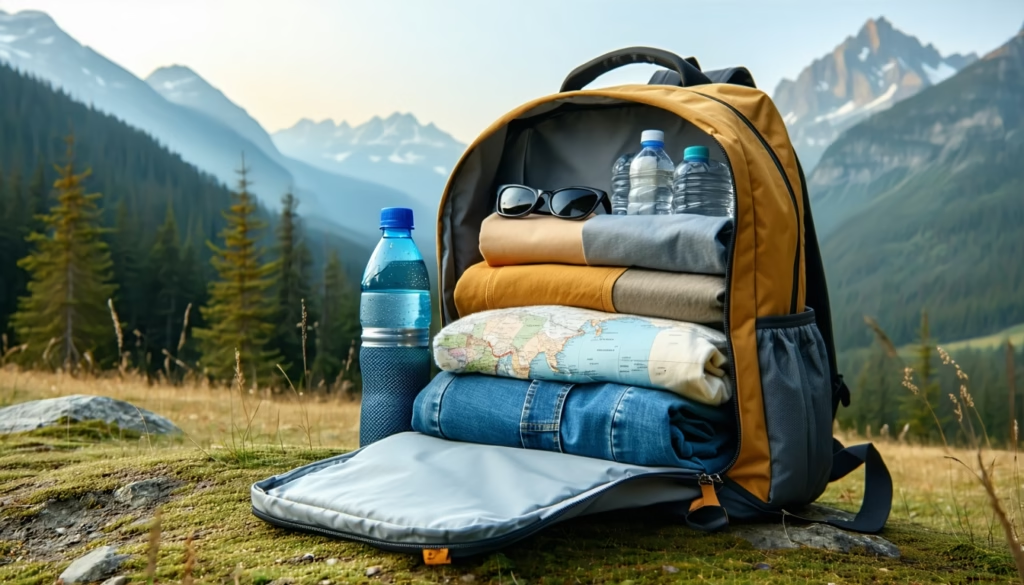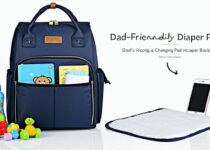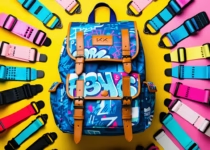Benefits Of Wide Opening Mouths For Efficient Packing

We’ve all been there: you’re juggling coffee, ticket, and phone when you unzip a bag that barely gives you any room to breathe. If you’ve ever struggled to fit your essentials into a cramped bag, a wide opening weekender could be your new best friend. In this post, we’ll explore why a generous mouth design can transform our packing routine, make gear easy to find, and get us out the door faster.
Here’s what we’ll cover:
- Defining what makes a wide-mouth weekender unique
- Core perks of that roomy opening
- How clamshell styles compare to classic top-loaders
- Tips for supercharging your packing flow
- Choosing the right materials and features
- Care tricks to keep your bag in top shape
Let’s dive in and see how a simple zip can make packing feel like a breeze.
Understanding Wide Opening Weekenders
What Are Wide Opening Weekenders?
A wide opening weekender backpack features a large clamshell or U-shaped zipper that lays the bag flat when unzipped. Instead of reaching through a narrow top hatch, we can spread everything out and spot what we need at a glance. This design is sometimes called a clamshell backpack, and you’ll find it in many clamshell weekender backpack models.
How They Differ From Traditional Bags
Traditional top-loading weekender bags open like a bucket—items slide in from above. That works for quick tosses but makes digging through layers a pain. With a wide mouth layout, we:
- See all compartments at once
- Organize items in flat layers
- Avoid frantic rummaging
This approach cuts down on frantic airport moments and stops us from forgetting that one last sock.
Key Benefits Of Wide Openings
Effortless Access To Gear
Nothing slows us down like digging for small items at the bottom of a bag. A wide opening weekender lets us unzip and lay the bag flat, so every pocket and pouch sits right in front of us. That means:
- Grabbing chargers without emptying everything
- Reaching shoes without shifting clothes
- Finding toiletries in half the time
Improved Organization
When we can see the full interior at once, messy piles become neat stacks. Use packing cubes to group socks, shirts, and tech accessories. This clear view encourages us to pack smarter and maintain order throughout our trip.
Quick Packing And Unpacking
Ever unpack in a hotel room and end up with clothes spilling everywhere? Wide mouth styles let us unload in one smooth motion. Just unzip, lift the panel, and slide items onto the dresser. When it’s time to leave, reversing the process takes seconds.
Better Visibility Inside
Relying on a flashlight or flashlight app to peer into a deep bag is a relic of the past. By contrast, a bag that opens wide reflects overhead light across every crevice. We spot that hidden phone cable or the missing earring in no time.
Comparing Clamshell And Top-Loading Designs
Clamshell Design Explained
A clamshell layout features a U-shaped zipper running around the front panel. When unzipped, the front folds down, exposing the full main compartment. This design shines for weekend trips, allowing us to pack flat garments like dress shirts or jackets without crushing them.
Pros And Cons Comparison Table
| Feature | Clamshell Design | Top-Loading Design |
|---|---|---|
| Accessibility | Full-width, flat access | Narrow, vertical reach |
| Organization | Easy compartmentalization | Simpler interior, fewer pockets |
| Packing Speed | Very fast—lay it out, zip up | Moderate—toss and stack |
| Security | Zipper vulnerability on sides | Zipper often shielded by top flap |
| Structural Rigidity | Panel may flop down if unzipped | More rigid when closed |
Clamshell models win for speed and visibility, while top-loaders may feel slightly more secure in rough conditions.
Optimizing Packing Efficiency
Using Packing Cubes In a Backpack
We love packing cubes for color-coded organization. Slide a cube of shirts on one side and a cube of underwear on the other. Not only do cubes keep things tidy, they also compress soft items—giving us more room in that wide-mouth bag. Check out our guide on packing cubes in a backpack for pro tips.
Layering Items Strategically
A smart layer system keeps things balanced and accessible.
Heavy Items Placement
Place heavy shoes or electronics near the back panel. This alignment keeps weight close to our spine and improves comfort on the go.
Protecting Fragile Belongings
Wrap sunglasses and breakables in soft fabrics or place them inside a small zip pouch. Then tuck them between clothes for added cushioning.
Leveraging Side Compartments
Most weekender backpacks offer side pockets for water bottles or chargers. Stash flat items like passports or notebooks here so you don’t have to unzip the main compartment for every little thing.
Selecting The Right Design
Material And Durability Options
Materials range from lightweight nylon to rugged canvas or premium leather. Nylon resists water and tears, canvas looks classic, and leather ages beautifully. To weigh pros and cons, see our canvas vs leather vs nylon backpack comparison.
Size And Volume Considerations
Weekender backpacks typically hold 20 to 40 liters. Think about your average trip length:
- 1–2 days: 20–25 L
- 3–4 days: 30–35 L
- 5+ days: 35–40 L
Measure your essentials against those volumes to pick a bag that isn’t overkill.
Must-Have Features
Beyond the wide opening, here are key extras to look for:
Expandable Sections
An expandable weekender backpack can give us a few extra liters when needed. Just unzip the gusset to bump capacity on souvenirs or extra layers.
Weather Resistance
A water-resistant coating or dedicated rain cover shields contents during sudden downpours. We recommend checking models with sealed zippers for full protection—see our weather-resistant weekender backpack options.
Maintaining Your Weekender Backpack
Cleaning And Care Tips
Keep your bag looking fresh with these simple steps:
- Empty all compartments and shake out debris
- Spot-clean stains with mild soap and water
- For canvas or nylon, wipe with a damp cloth
- For leather, use a leather cleaner and conditioner
Always air-dry bags before stashing them away.
Storage Best Practices
Store your weekender in a cool, dry spot. Stuff it lightly with tissue paper or an old T-shirt to help the shape hold. Avoid folding or crushing the bag to prevent zipper stress.
Frequently Asked Questions
What Is A Wide Opening Weekender Backpack?
A wide opening weekender backpack features a clamshell or U-shaped zipper that lies flat when open, giving you full visibility and easy access.
How Does A Clamshell Design Help With Packing?
Clamshell layouts let you spread items flat, so you can organize by category and avoid digging through layers to find what you need.
Can I Use A Wide-Mouth Weekender As A Carry-On?
Most wide-mouth designs meet standard carry-on dimensions, but always check airline size rules before booking to be safe.
Are Wide-Mouth Designs Durable For Travel?
Yes, quality models use reinforced stitching and robust zippers. Look for weather-resistant or water-resistant versions to handle rougher trips.
How Do I Organize A Wide-Opening Backpack?
Use packing cubes, pouches, and side pockets to group similar items. Layer from heavy at the back to light at the front for balanced weight distribution.
Is an Opening Bag Suitable For Business Trips?
Absolutely. The flat layout lets us pack suits or dress shirts without wrinkles. A dedicated laptop sleeve also keeps tech secure.
Can I Fit Shoes In A Wide Opening Weekender?
Yes. Shoes slide in easily along the bottom panel. You can use a shoe bag or a side compartment to keep them separate from clean clothes.
Summing Up Benefits
A wide opening weekender backpack streamlines packing, improves organization, and speeds up airport routines. By choosing the right material, size, and extra features—like weather resistance or expandable panels—we can tailor our bag to every adventure. Ready to upgrade your travel game? Try packing in cubes, layer smartly, and enjoy the instant visibility that only a wide-mouth design can deliver.


